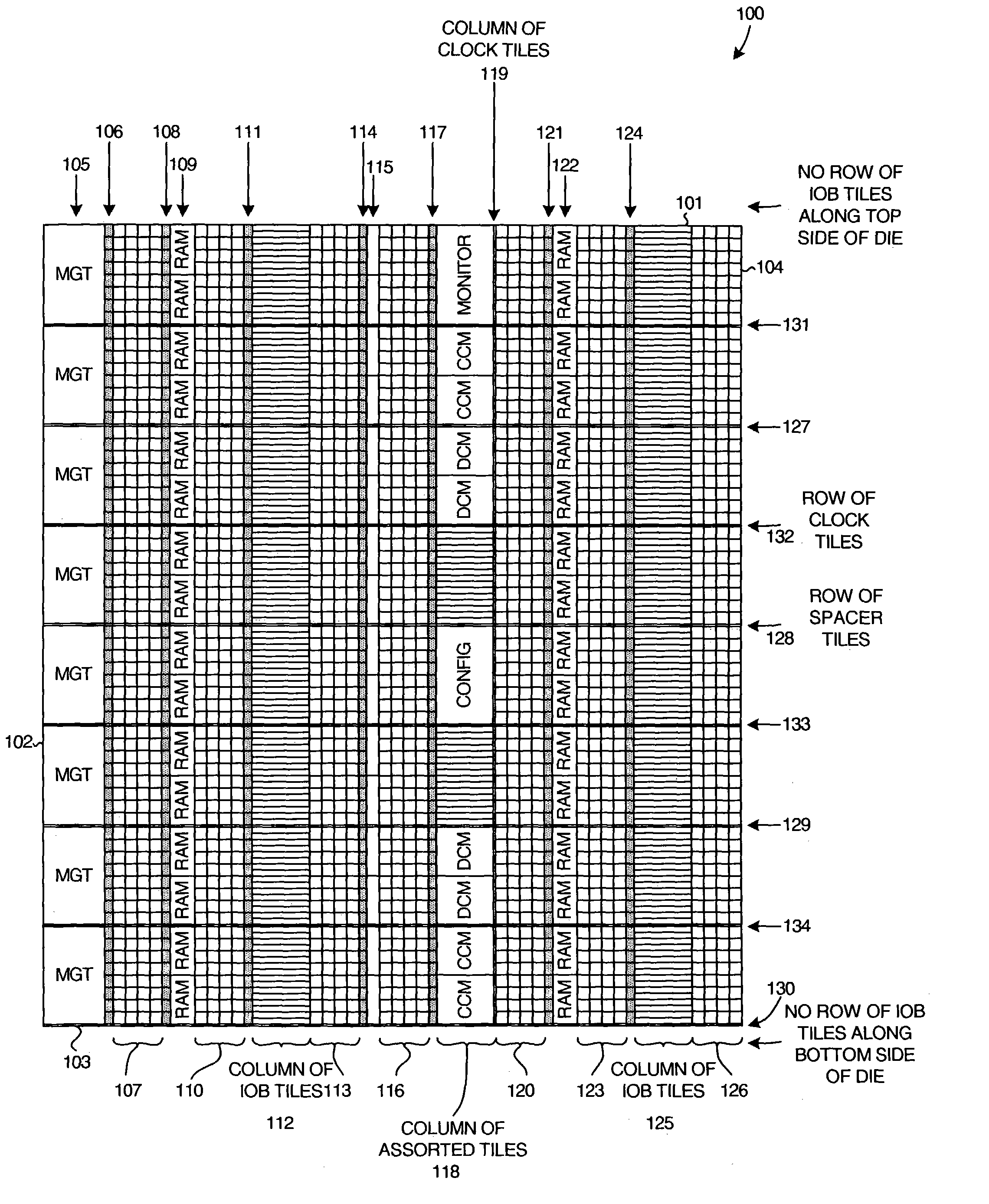Columnar floorplan
a floor plan and column technology, applied in the field of integrated circuits, can solve the problems of increasing the cost of an integrated circuit die directly related to its size, increasing the cost of an integrated circuit die to produce, and the layout of an integrated circuit die includes considerable engineering effort and therefore cost. , to achieve the effect of reducing the cost of the integrated circui
- Summary
- Abstract
- Description
- Claims
- Application Information
AI Technical Summary
Benefits of technology
Problems solved by technology
Method used
Image
Examples
Embodiment Construction
[0035]FIG. 5 is a simplified top-down diagram of a field programmable gate array (FPGA) integrated circuit die 100 in accordance with an embodiment of the present invention. FPGA die 100 is rectangular and has four sides 101–104. The circuitry of the FPGA is laid out across the surface of die 100 as a plurality of columns of repeatable tiles. Proceeding from the left side 102 of die 100 to the right side 104 of die 100, there is a column of identical multi-gigabit transceiver (MGT) tiles 105, a column of input / output interconnect (IOI) tiles 106, four columns of configurable logic block (CLB) tiles 107, a column of IOI tiles 108, a column of block random access memory (BRAM) tiles 109, four columns of CLB tiles 110, a column of IOI tiles 111, a column of input / output block (IOB) tiles 112, four columns of CLB tiles 113, a column of IOI tiles 114, a column of digital signal processing (DSP) tiles 115, four columns of CLB tiles 116, a column of IOI tiles 117, an irregular column 118 m...
PUM
 Login to View More
Login to View More Abstract
Description
Claims
Application Information
 Login to View More
Login to View More - R&D
- Intellectual Property
- Life Sciences
- Materials
- Tech Scout
- Unparalleled Data Quality
- Higher Quality Content
- 60% Fewer Hallucinations
Browse by: Latest US Patents, China's latest patents, Technical Efficacy Thesaurus, Application Domain, Technology Topic, Popular Technical Reports.
© 2025 PatSnap. All rights reserved.Legal|Privacy policy|Modern Slavery Act Transparency Statement|Sitemap|About US| Contact US: help@patsnap.com



